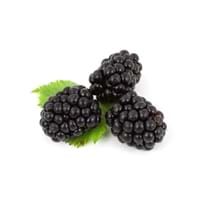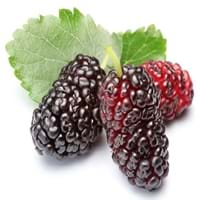Health Benefits
Cancer prevention, Heart care, Increases metabolic rate, Reduces stress, Treatment of dysentary, Treatment of skin Diseases
Anti-aging benefits, Boosts immune system, Cancer prevention, Flu treatment, Hair care, Heart care, Improves eye vision, Increases metabolic rate, Kidney stone treatment, Maintains healthy cholesterol level, Skin cleansing, Skin rejuvenation, Treatment of common cold, Treatment of skin Diseases
General Benefits
Digestive aid, Maintains healthy cholesterol level, Strengthens bones
Boosts immune system, Controls blood sugar levels, Flu treatment, Improves eye vision, Maintains healthy cholesterol level, Treatment of common cold
Skin Benefits
Hydrates skin, Skin rejuvenation, Skin revitalization
Anti-aging benefits, Skin cleansing, Treatment of skin diseases
Hair Benefits
Promotes longer and healthier hair
Protects hair, Regulates hair growth
Allergy Symptoms
Facial muscle tension, Pressure in sinus, Respiratory congestion, Runny nose, Sneezing, Tingling sensation in wrist and face
Breathing difficulty, Itching, Nasal congestion, Redness of eyes, Runny nose, Sneezing
Side Effects
Nausea, Vomiting, Might cause change of urine color
Decrease in blood sugar levels, Allergic reaction
Best Time to Eat
Best if taken as a breakfast (or empty stomach), As a snack in the late afternoon, Don't consume at night and before bed, Eat the fresh ones, avoid mixing with any other foods, don't eat after meal., Morning time (before lunch)
Best if taken as a breakfast (or empty stomach), As a snack in the late afternoon, Don't consume at night and before bed, Eat the fresh ones, avoid mixing with any other foods, don't eat after meal., Morning time (before lunch)
Vitamin B5 (Pantothenic Acid)
Not Available
Vitamin C (Ascorbic Acid)
Vitamin K (Phyllochinone)
Calories in Fresh Fruit with Peel
Calories in Fresh Fruit without Peel
Not Available
Not Available
Calories in Canned Form
Not Available
Calories in Pie
Not Available
Season
Spring, Summer
Spring, Summer
Varieties
Prime Ark, Prime Jim, Illini Hardy, Kiowa, Shawnee, Apache, Arapaho, Chester, Hull, Natchez, Navaho and Triple Crown and Von
Charparral, Pendula, Teas, Bellaire and Lingan
Color
Purplish black
Pink, Purple, White
Inside Color
Magenta
Pink
Origin
Asia, Europe, North America, South America
China
Soil Type
Well-drained
Clay, Loam
Climatic Conditions
Dry, Warm to hot climate
Sunny
Facts about
- There are around 2000 varieties of blackberries throughout the world.
- 80-85 degrees is the ideal temperature for its production.
- Leaves of blackberry tree are used to treat sore throats and mild inflammation of the gums.
- It can take up to 10 years for a tree to produce mulberry fruit.
- Mulberry leaves are fed to silkworms to enhance silk production.
- In Germany, they say that devil uses root of mulberry tree to polish his boots.
Top Producer
United States of America
China
Other Countries
China, New Zealand, Serbia, South Africa
Colombia, Egypt, India, Indonesia, Kenya, Mexico, Pakistan, Peru, Russia, United States of America
Top Importer
United States of America
Not Available
Top Exporter
Mexico
China
Botanical Name
Rubus Fruticosus
Morus Alba
Synonym
Rubus Millspaughii or Rubus Laciniatus
Morus atropurpurea or Morus multicaulis
Subkingdom
Tracheobionta
Tracheobionta
Division
Magnoliophyta
Magnoliophyta
Class
Magnoliopsida
Magnoliopsida
Subclass
Rosidae
Alismidae
Species
Rubus fruticosus
M. alba
Generic Group
Rose
Mulberry
Difference Between Blackberry and Mulberry
We might think that Blackberry and Mulberry are similar with respect to nutritional value and health benefits. But the nutrient content of both fruits is different. Blackberry and Mulberry Facts such as their taste, shape, color, and size are also distinct. The difference between Blackberry and Mulberry is explained here.
The amount of calories in 100 gm of fresh Blackberry and Mulberry with peel is 43.00 kcal and 43.00 kcal and the amount of calories without peel is Not Available and Not Available respectively. Thus, Blackberry and Mulberry belong to Low Calorie Fruits and Low Calorie Fruits category.These fruits might or might not differ with respect to their scientific classification. The order of Blackberry and Mulberry is Rosales and Rosales respectively. Blackberry belongs to Rosaceae family and Mulberry belongs to Moraceae family. Blackberry belongs to Rubus genus of Rubus fruticosus species and Mulberry belongs to Morus genus of M. alba species. Beings plants, both fruits belong to Plantae Kingdom.









